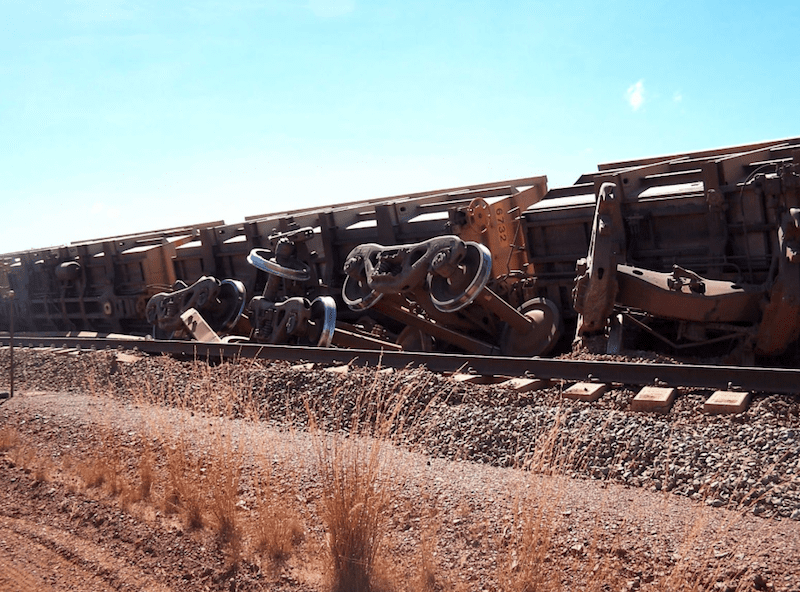The ATSB released their final report on the BHP derailment at Yandi just in time to get ready for their next big assignment. The final report (available here) provides some great learnings for the rail industry but also provides a great case study for the mining industry on preventative maintenance and effective methods for NDT.
We’ve included the following excerpt of the report for our readers.
“On 2 December 2015, BHP Billiton (BHPB) train M03544 was loaded with iron ore at Yandi, Western Australia (WA). The train departed Yandi at about 2211 Western Standard Time (WST) and travelled north towards Port Hedland, WA, on the Newman main line. At about 0530 on 3 December 2015, the train controller based in Perth was alerted to a dragging equipment detector (DED) alarm at the 67 km mark at Walla.
Seven seconds later, train M03544 recorded a loss of brake pipe air pressure before the train came to a stop with the lead locomotive positioned near the 64.188 km mark, about 3 km from the DED.
The train controller contacted the train driver, advising that DED alarms had activated on both the east and west tracks. The train driver informed the controller that a loss of brake pipe air pressure had resulted in an uncommanded brake application bringing the train to a stop.
Shortly afterwards, as the driver walked towards the rear of the train to determine the cause of the loss of air pressure, he found that the train had separated and derailed.
What the ATSB found
The ATSB investigation identified that train M03544 derailed due to a broken rail. A fracture of the rail was probably initiated by the rapid growth of a detectable, yet unidentified, fatigue-related transverse defect(s) in the west rail near the 67 km mark during the passage of the train.
The investigation also identified that the condition of the rail in the vicinity of the fracture contributed to relatively frequent failures in that area. Finally, ultrasonic defect testing of the rail was undertaken in the heat of the day, potentially masking defects due to compressive forces in the rail.
What have BHP done to prevent re-occurrence?
In response to this occurrence, the operator of the train and track, BHP Billiton, took measures to improve track condition and reduce in-service rail defects by:
• accelerating the re-railing of 833 kilometres of track, including replacement of the track in the vicinity of the fracture
• the introduction of processes to:
– reduce the initiation of rolling contact fatigue cracks in rail track
– improve rail defect detection to prevent fatigue cracks from progressing to track failure.
What’s the key learnings?
Early detection, assessment, and effective management of track defects is critical to minimising the risk of derailment and maintaining safe rail operations. Therefore, it is essential that track maintenance and infrastructure fault detection be of a high standard.
Read more Mining Safety News














Add Comment